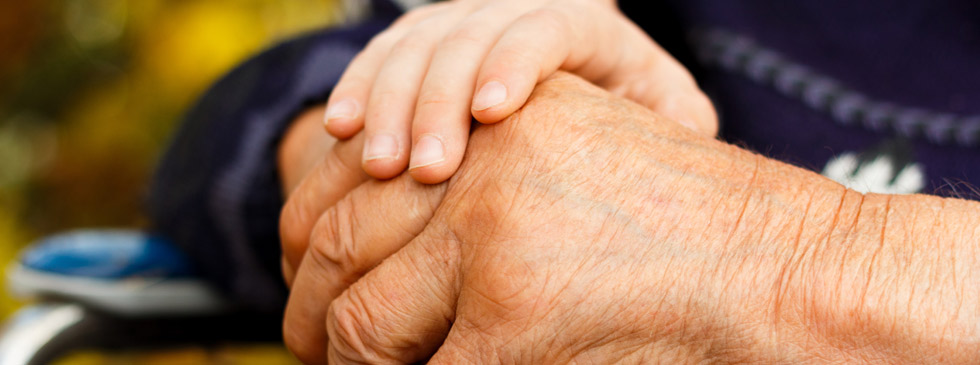Arthritis
A Caregiver’s Guide to Arthritis: Avoiding Caregiver Burnout
A danger or caregiving, whether you are a spouse or grown child caring for a parent, is offering care at your own physical and emotional expense. You are no help to your family member if you are burned out. Below are tips for managing caregiver stress and fatigue.
Take time to exercise. Exercise is not only essential to maintain the physical stamina you need to care for your spouse or family member, but also provides a bread in your day. And the endorphins-feel-good hormones-that exercise induces will also help boost spirits that can get a beating as a caregiver.
Ask for help. Don’t hesitate to ask other family and friends to share your care-taking duties. Disperse tasks like driving to doctors’ appointments or picking up prescriptions. You don’t have to do everything. If no one is available, consider hiring regular help that can offer you a chance for a respite. Talk to other friends and acquaintances who have also been caregivers, or join a caregiver’s support group where you can get empathy and information.
Check employer benefits. Your employer may offer a plan that helps families who are caring for loved ones.
Monitor your won spirits. It’s not unusual for caregivers to become depressed from stress, exhaustion, and from seeing someone they love in pain. If you feel blue for two weeks or longer, ask your doctor if you could be depressed and what remedies such as antidepressants he might suggest.
Stay social. Isolation is a difficulty for caregivers. Schedule regular outings with friends, even if they are brief.
Get a handle on finances. Money may be an issue. Talk about who will be responsible for what costs with your parent and siblings.
Enlist other family. Talk to other family members about how they would like to help. Try to be realistic about what you can manage and what others need to help you with.
A Caregiver’s Guide to Arthritis- Physical Challenges: How You Can Help
The range of physical challenges from arthritis can be extensive: The person may have difficulty walking, trouble with household tasks like opening jars and turning doorknobs, or even problems with dressing and combing his or her hair. And pain pay make sleep hard to come by. But there are ways you can help easy physical restraints and discomforts.
- Arrange for physical and occupational therapy. A physical therapist can develop an exercise routine for your family member that will likely include range-of-motion exercises that will make it easier for him to do things like comb his or her hair, or stand up or sit down; strength training that will strengthen the muscles that support the joints; and some cardiovascular exercise like walking or swimming that will help him maintain overall fitness. An occupational therapist will assess what your family member can and can’t do, and address ways to help make difficult tasks easier. For instance, she may suggest small household changes like door latches instead of twist knobs that won’t stress the joints.
- Employ heat and cold. Heat works by stimulating blood circulation, which can reduce muscle spasms and relieve pain. Encourage your family member to take a warm shower each morning to relieve morning stiffness. Applying heating pads or patches to painful areas for 15 minutes at a time can help as well.
- Try massage. Research shows that regular massage can reduce pain and stiffness and improve range of motion and joint function. An added bonus is that massage also reduces anxiety, a common accompaniment to chronic pain. Researchers have found that massage lowers stress hormones and increases feel-good neurotransmitters like serotonin. Make sure the doctor thinks it’s a good idea and get a referral to a massage therapist familiar with arthritis.
- Address sleep difficulties. Pain robs sleep. And fatigue increases pain. Talk with the doctor about ways that your spouse or parent can sleep more soundly. Try to persuade your family member to avoid caffeine and alcohol, which disturb sleep. And share some minutes of soft music, deep breathing, and warm milk before going to sleep in a cool, dark room.
- Prepare nutritious meals. Some foods can help fight inflammation, while others may trigger arthritic flares (increase in symptoms). And maintaining a healthy weight can also help manage joint pain. Fruits and vegetables, fish, fiber and whole grains can help fight inflammation. High fat foods may trigger arthritic flares.
- Evaluate housing. If you are caring for a parent, you may want your parent to live with you. Evaluate all the options with your parent first. Your parent may want to stay where she is, move to a nearby apartment or a skilled facility with assisted living.
A Caregiver’s Guide to Arthritis: Understanding Your Loved One’s Needs
People handle pain and discomfort in all sorts of ways. Some people keep a stiff upper lip, feeling embarrassed or uncomfortable with complaints. Others may complain indirectly by acting out of sorts or grouchy. Others may get down in the dumps. Below is a roadmap to some of the challenges.
Emotional Challenges: How You Can Help
People with arthritis may also experience depression, anxiety and/or a feeling of helplessness because they are no longer able to do things they used to do. They can also feel isolated, like no one quite understands what they are going through. And stress from chronic pain can stalk them as well. You can help by doing the following:
- Listen and Empathize – You may feel like you need to solve everything when in fact what your loved one may want most is to express their emotions of sadness and loss. Encourage them to talk about how they are feeling, and any concerns or fears.
- Make a date – Plan some outings like lunch out, or a short shopping trip, or just a time to read together. That can help your loved one feel less isolated and alone.
- Practice relaxation together – Chances are you could both use some R&R. Practice deep breathing together. Or run your family member a warm bubble bath where he can listen to music and relax.
- Encourage some movement – if your spouse or parent is able, ask him or her to go for a short walk with you outside. Exercise can lift spirits and lessen pain. Ask the doctor what kind of exercise would be helpful.
- Ask for help – Tell the doctor that your family member seems depressed and anxious. The doctor may be able to prescribe an antidepressant or anti-anxiety medication that can help. Some antidepressants also help with pain.
The Caregivers Guide to Arthritis: Your Loved One’s Medical Care
If your loved one is in pain, it may be hard for them to juggle the details of medical care alone. He or she may need help getting to doctor’s appointments, remembering details of appointments, taking medications and making sure prescriptions are refilled. You can be an extra set of eyes and ears for your family member, and an aid in navigating the best health care plan for him or her.
Your relationship with the Doctor/Staff
Being able to communicate concerns you have about your spouse or parent to the doctor and staff members is essential. But you also need to make sure that your participation does not erode your family member’s own relationship with the physician, instead supporting and augmenting it, a sometimes delicate balance. Here are ways you can develop a positive relationship with the physician and support your loved one’s relationship as well.
What you can do to help
- Educate yourself.
- Learn all you can about the different types of arthritis, its complications and the side effects of arthritis drugs (if any). Websites with excellent information include the Arthritis Foundation, www.arthitis.org; the National Institute of Arthritis and Musculoskeletal and Skin Diseases, www.niams.nih.gov; and the American College of Rheumatology, www.rheumatology.org.
- Attend doctor’s visits.
- The doctor may offer a lot of information at once and sometimes in language that can be tough to understand. By being at each visit, you can take notes and also ask the doctor to explain technical terms you and your family member may not understand.
- Prepare ahead.
- Ask your spouse or parent what they want to talk to the doctor about and write those concerns and questions down before the doctor’s visit. Add your own observations about any medical changes you’ve noticed, like increased pain, lack of appetite, and sleeplessness.
- Acknowledge disagreements.
- Let the doctor know if there are areas of care that you and your family member don’t agree on. Discuss those concerns in private with the doctor.
- If you’re and adult child caring for a parent, the most important this is for you to know what your parent is feeling and what she needs from you.
- Ask about her worries and concerns about her future, about her arthritis, about her medical care, and about your involvement. Try to find out what her preferences are about where she wants to live and what kind of care she wants and needs. Try to remember that your parent probably values independence as much as you do.
A Caregivers Guide to Arthritis: Common Arthritis-Related Diseases
While OA and RA may be the most commonly recognized types of arthritis, there are other related conditions that are often found in older adults. They include:
- Fibromyalgia
- A condition that causes pain in the muscles and soft tissues and is often accompanied by fatigue, poor sleep and sensitivity to touch, especially in certain tender points on the body.
- Gout
- A condition that occurs when the body produces too much of a substance called uric acid, which can lead to the development of uric acid crystals in the joint (typically the big toe) and causes severe pain and swelling.
- Osteoporosis
- One of the most common arthritis-related diseases, this condition causes bone to lose mass and become thin and brittle, which can lead to painful fractures, rounded shoulders and loss of height.
Facts About Rheumatoid Arthritis “RA”
WHAT IT IS
Rheumatoid arthritis is a chronic inflammatory disease that affects at least 1.5 million American adults, about three-fourths of whom are women. It is thought to be triggered by a faulty immune system.
WHAT IT FEELS LIKE
RA can come with fatigue, a low fever, little appetite, pain, limited movement and stiffness that can last for hours, especially in the morning. People with severe RA can also develop lumps called rheumatoid nodules under the skin near affected joints, which can be painful.
COMMON ARTHRITIS-RELATED DISEASES
While OA and RA may be the most commonly recognized types of arthritis, there are other related conditions that are often found in other adults. They include:
- Fibromyalgia- A condition that causes pain in the muscles and soft tissues and is often accompanied by fatigue, poor sleep and sensitivity to touch, especially in certain tender points on the body.
- Gout- A condition that occurs when the body produces too much of a substance called uric acid, which can lead to the development of uric acid crystals in the joint (typically the big toe) and causes severe pain and swelling.
- Osteoporosis- One of the most common arthritis-related diseases, this condition causes bone to lose mass and become thin and brittle, which can lead to painful fractures, rounded shoulders and loss of height.

